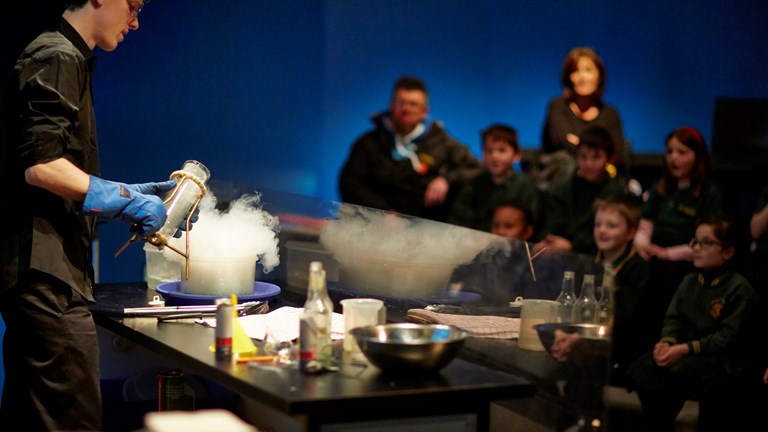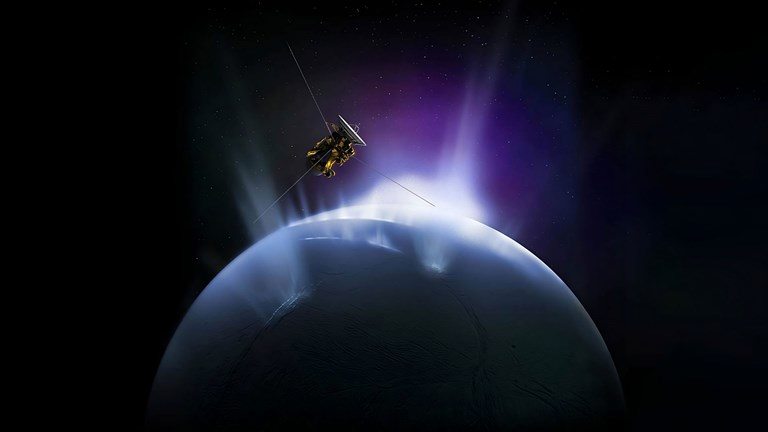
Cool Stuff
- What
- Museum Staff-led
- When
- Terms 1 to 4, Monday to Friday
- Duration
- 30 minutes in the Energy Lab
Curriculum links & Accessibility & Access Fund - Year level
- Years 3 to 8
- Minmum student numbers
- Minimum 15 students
- Maximum student numbers
- Maximum 100 students
- Cost
- $9 per student + education service fee
- Booking information
- Bookings 13 11 02
Experience the coolest chemistry program, using liquid nitrogen to explore the properties of solids, liquids and gases, such as changes of state, expansion and contraction. This curriculum aligned science show is perfect for mid to upper primary school students, and lower secondary school students.
Students will experience
- Spectacular experiments involving liquid nitrogen, including the chance to see this amazing liquid up close
- Seeing what happens when things are cooled to –196°C, such as becoming solid, becoming brittle or contracting
- Thinking critically about experiments, posing hypotheses that the presenter will test
Students will learn
- Matter can exist as a solid, liquid or gas
- Changes in temperature can change the state of matter, through processes such as freezing, melting or boiling
- Temperature can cause changes to matter, such as causing it to expand or contract
Related Links
Victorian Curriculum links
Science: Levels 3 and 4
Chemical sciences
- solids, liquids and gases have observable properties; adding or removing heat energy leads to a change of state between solids, liquids and gases
VC2S4U04
Physical sciences
- heat energy can be generated from different sources; temperature changes may happen when heat is transferred from one object to another
VC2S4U09
Science: Levels 5 and 6
Chemical sciences
- the observable properties of matter (solids, liquids and gases) can be explained by modelling the motion and arrangement of their particles; mixtures (including solutions) can be formed by combining 2 or more different substances
VC2S6U03
Science: Levels 7 and 8
Chemical sciences
- the particle and kinetic theories of matter can be used to describe the arrangement and motion of particles in a substance, including the attraction between particles, and to explain the properties and behaviour of substances, including melting point, boiling point, density, compressibility, gas pressure, viscosity, diffusion, sublimation, and expansion and contraction
VC2S8U05









